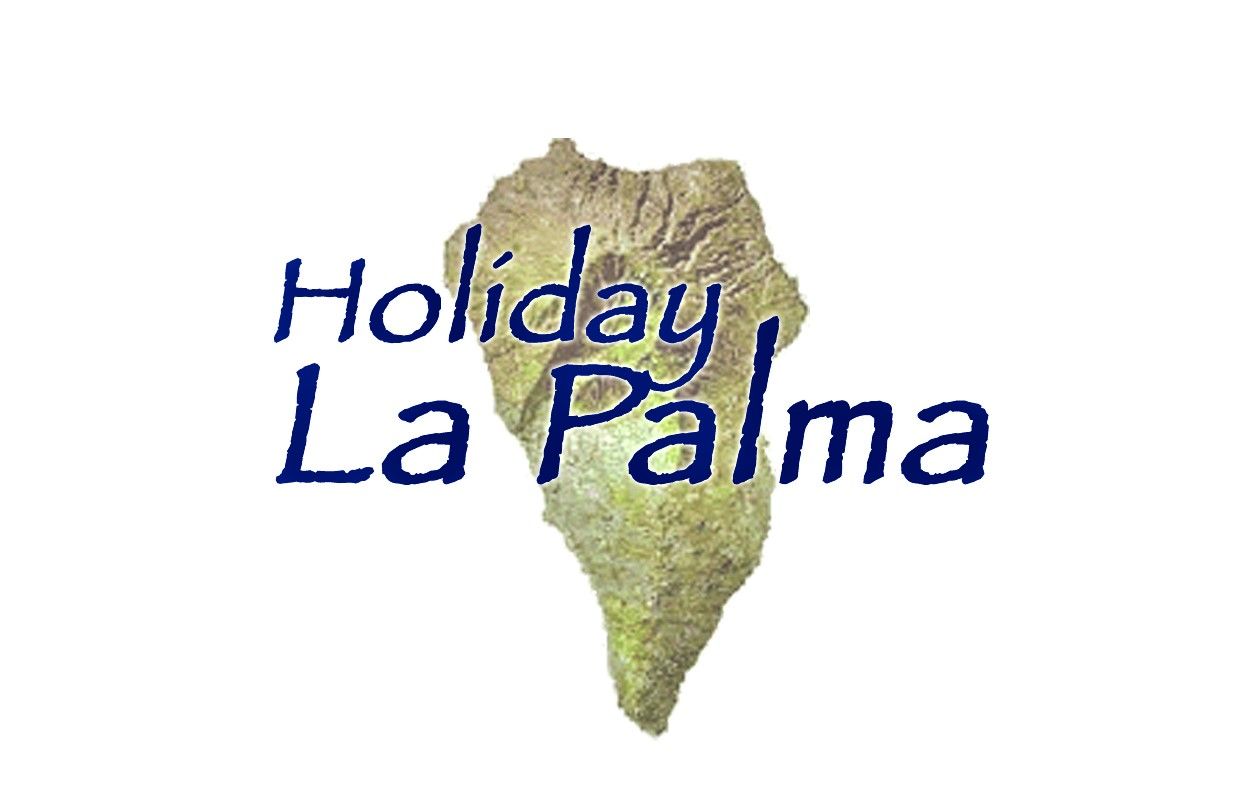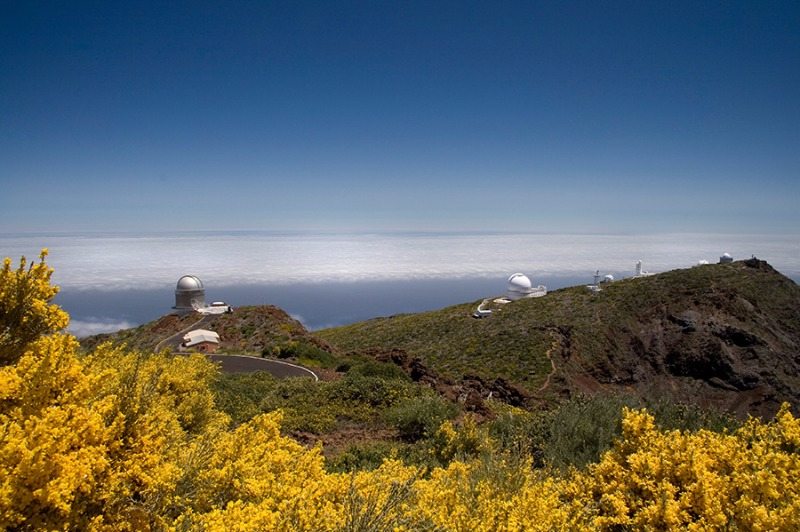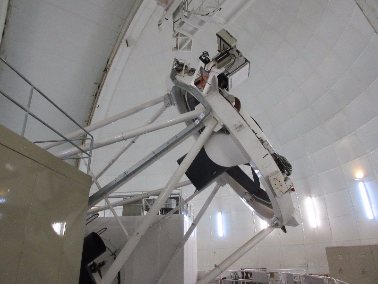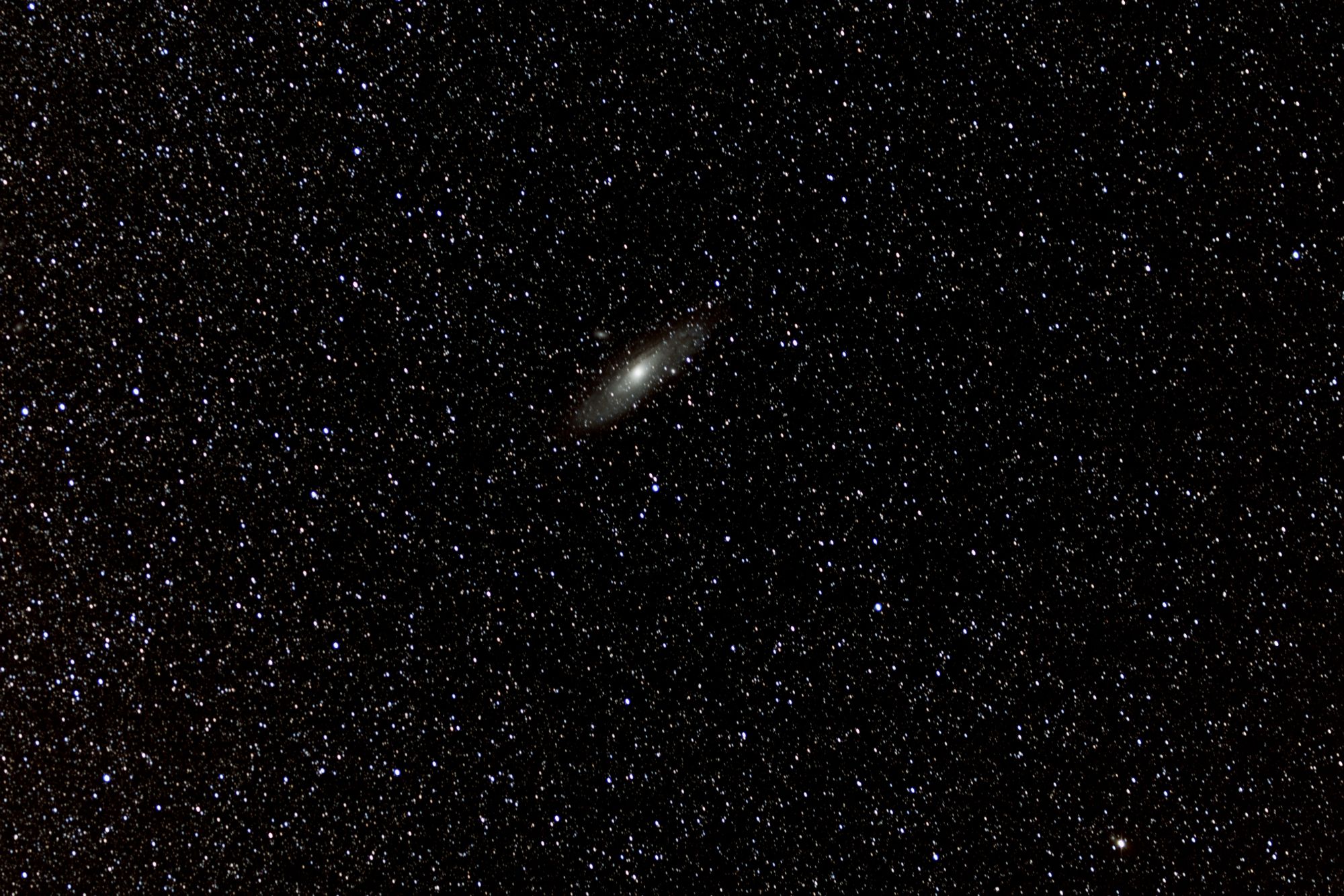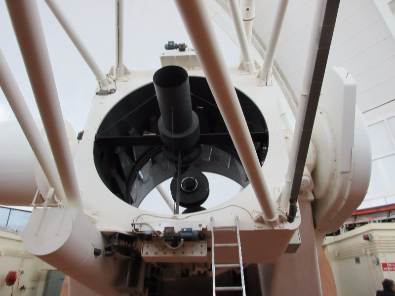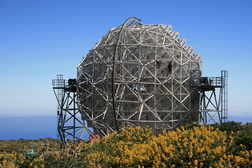Astronomy on La Palma, Canary Islands
It seems that holiday makers are suddenly waking up to the night skies of La Palma!
Yes, the bright light in astronomy is La Palma, a small island in the Canaries.
La Palma has a distinct lack of air pollution thanks to negligible industry and relatively little traffic. It has little light pollution due to its mainly rural nature. And a ready access to a considerable height at 2426m above sea level which provides viewing about the cloud layer and well away from sea moisture.
As 2396m above sea level are the Roque de Muchachos Observatories, one of the largest arrays of telescopes in the world.
To top it off, La Palma is governed by the Law of the Skies (the first island to have this protection) which controls light pollution, radio electrical pollution, atmosphere pollution and aviation routes.
As you can see, La Palma ticks all the boxes!
To view the night sky above La Palma is a staggering spectacle for the casual observer without any form of telescope or binoculars. Yes, it's that awesome!
But it's also a time when professional astronomers are studying theoretical, observational or instrumental astrophysics and beyond. Whichever way you look at it, observation of the stars on La Palma is in the very top league of astronomy - it's not by accident that La Palma is chosen to be home of the largest optical-infrared telescope in the world, the Gran Tecan.
There are several ways to enjoy the night skies of La Palma:
1) Casual observing - just look at the skies most evenings and you will be amazed at the stars - honestly, it's that good. If you want to book a rental cottage or casa rural, we have a selection with great viewing from your own terrace - ask us which rural houses or holiday house are suitable for stargazing and we'll be happy to book it for you.
2) Organised evening group viewing - for a deeper understanding of observing La Palma night skies, Astronomy Tours offer an organised evening of group observing with a trained instructor and using a telescope and/or binoculars.
3) Holiday Accommodation with telescope included - you can of course bring your own telescope/binoculars or we have a selection of holiday houses to rent with telescope provided.
4) Observatory tour - there are organised tours of the Roque de Muchachos observatory with a qualified Astroguide. The tours always take place in the day - night-time tours are not available as this is when the scientists are working. In fact, at night you cannot take your car up to where the observatories are because of light pollution by car headlights and that section of road is closed. If you would like to go on one of the tours, you must book and pay in advance. It is highly recommended that you book as soon as possible - please don't wait until you are on La Palma as the Observatory tours are often fully booked. To book a guided observatory tour of the Roque de Muchachos telescopes (temporarily suspended due to Covid), click here: Observatory Tour La Palma.
Telescopes at the observatory :
- 17m (6ft 7in) twin Major Atmospheric Gama Ray Imaging Imaging Cherenkov (MAGIC) mirrors
- Isaac Newton Group of Telescopes (ING) which operate three telescopes:
the 4.2 m (14 ft) William Herschel Telescope, the 2.54 m (100 inch) Isaac Newton Telescope and the 1 m (3 ft 3 in) Jacobus Kapteyn Telescope. - 2.5 m (8 ft 2 in) Nordic Optical Telescope (NOT).
- 1 m (3 ft 3 in) Swedish 1-m Solar Telescope (SST) operated by the Institute for Solar Physics.
- A 0.6 m (2 ft 0 in) optical telescope.
- Carlsberg Meridian Telescope (CMT).
- 1.2 m (3 ft 11 in) Mercator Telescope.
- 2 m (6 ft 7in) Liverpool Telescope.
- 10.4 m (34 ft) Gran Telescopio Canarias (Great Canary Telescope, dedicated 24 July 2009).
- 3.6 m (12 ft) Telescopio Nazionale Galileo (TNG).
- 11cm (4ft 33in) SuperWASP-North telescope, used to detect extrasolar planets.
- 0.45m (17.7in) Dutch Open Telescope (DOT).
- 1m (39ft 37in) Swedish Solar Telescope (SST) have been specifically built to study the sun.
Astronomical Viewpoints on La Palma
- 1 - Montaña El Molino (Barlovento)
- 2 - Montaña San Bartolo (Puntallana)
- 3 - Montaña Buracas (Villa de Garafía)
- 4 - Montaña Miraflores (Puntagorda)
- 5 - Amateur Pico Cruz - Sur (San Andrés y Sauces)
- 6 - Mirador al Infinito (San Andrés y Sauces)
- 7 - Mirador Barranco del Carmen (Santa Cruz de La Palma)
- 8 - Parque Los Álamos (Breña Alta)
- 9 - Mirador La Muralla (Tijarafe)
- 10 - Mirador de San Borondón (Tazacorte)
- 11 - Llano del Jable (El Paso)
- 12 - Llano de la Venta (Breña Baja)
- 13 - Puerto Naos (Los Llanos de Aridane)
- 14 - Montaña de Las Toscas (Villa de Mazo)
- 15 - Mendo (El Paso)
- 16 - Volcán San Antonio (Fuencaliente)
An Insider's Book about the Observatory
A Breathtaking Window on the Universe:
A guide to the observatory at the Roque de Los Muchachos by Sheila M. Crosby.
About the book: Welcome to the Roque de Los Muchachos, where 15 telescopes from 19 nations use the best night sky in Europe to explore the cosmos. Find out what it’s like to work in this strange world above the clouds. Learn about each telescope, how they’re run, and a little of what they’ve discovered.
Sheila Crosby knows the observatory well. She worked there as an engineer for nearly 12 years, and has been a tour guide there for three, showing hundreds of tourists, journalists and students around.
This book is written for the general public rather than professional astronomers, with over 120 photos and diagrams, and a full glossary of all the technical terms for non-geeks.
The recommended retail price is €17 plus 15€ + P&P.
